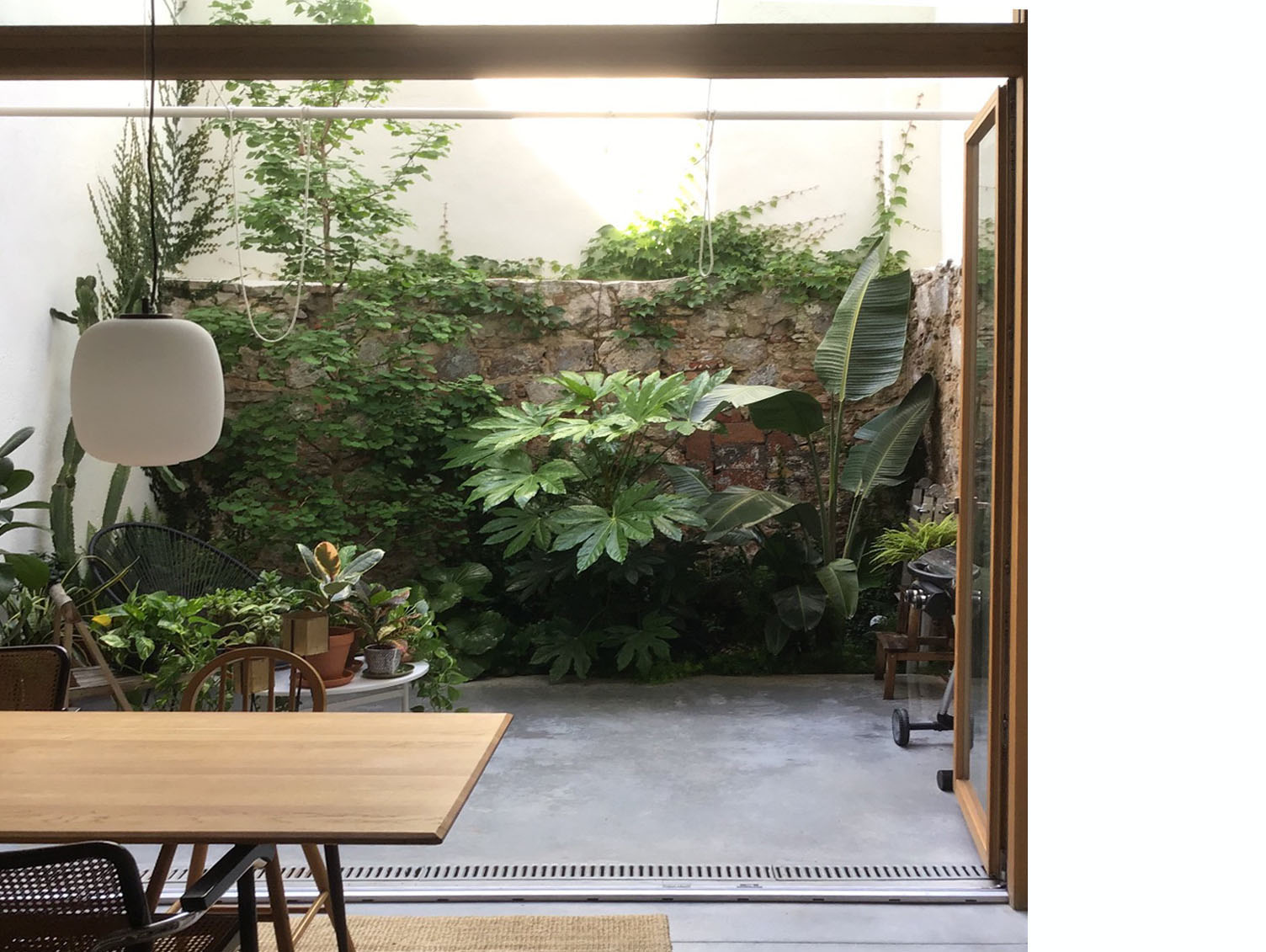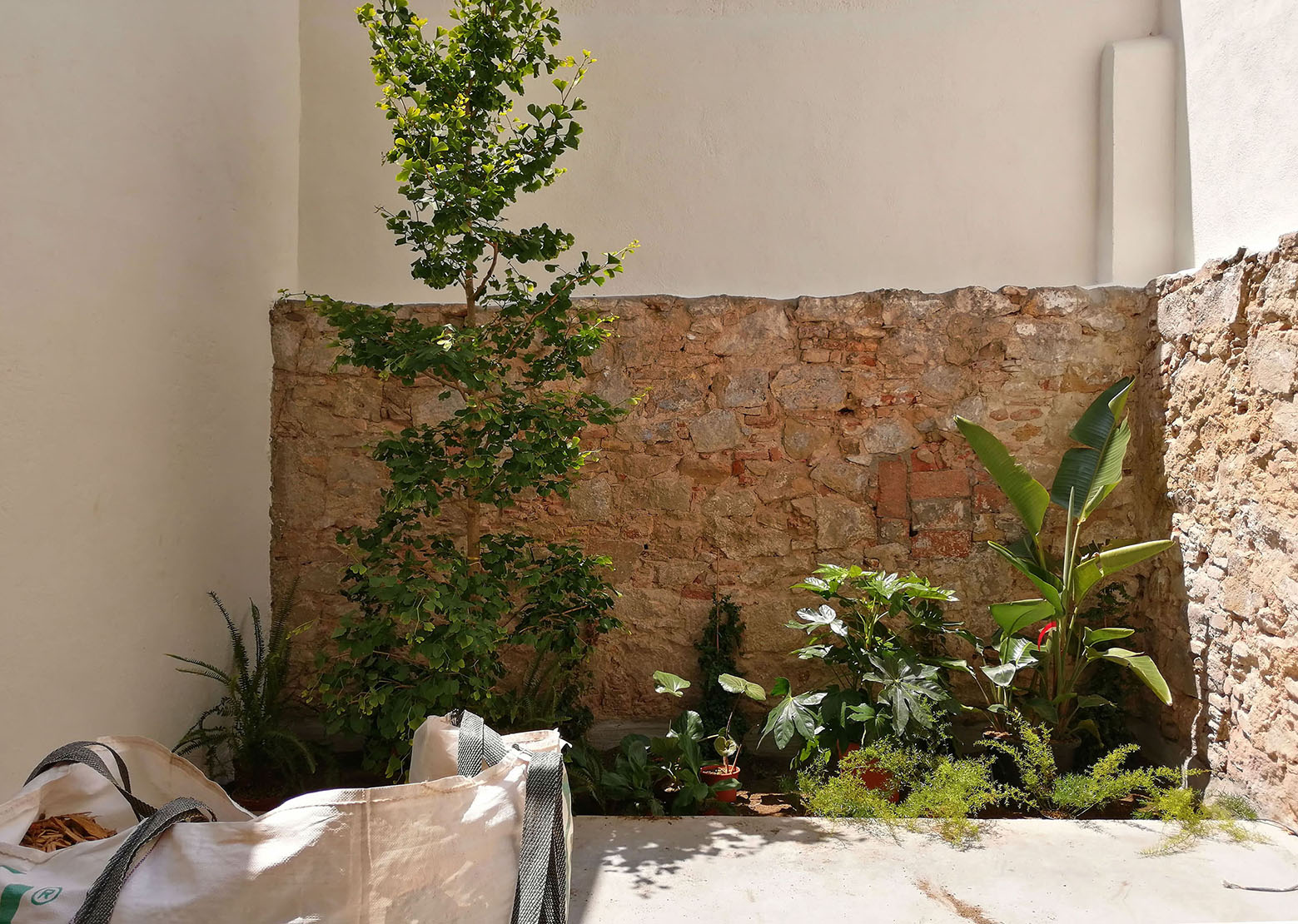POBLENOU COURTYARD
BUILDING AND DESIGN
2019
location: Roc Boronat street, Poblenou. Barcelona
construction company: LEA atelier
promoter: private
photography: LEA atelier, mcd.estudio , Iscletec
On the ground floor of a house recently renovated by mcd.estudio we designed and built a tropical-Mediterranean garden, an oasis of tranquility to live and be seen.
The design reinforces the idea of the garden designed as a backdrop to which the house opens completely through the living area. The patio plays a fundamental role in the organization of the project. “Its importance is not only functional but also scenographic: it accompanies the life that takes place inside the house”, says De Togni, architect of mcd.estudio, for the revista AD_ArchitecturalDigest.
In a more or less shady location, we decided to bet on vegetation, especially of tropical origin, with large leaves with different shapes and shades to bring green exuberance, in a variety of shades, to the home. To reinforce this idea of a jungle environment, we plant with a high density of species and plants per m2, generating a microclimate that promotes a degree of humidity and coolness that is also beneficial for the plants.
The landscaping proposal enhances the image of the garden as a backdrop, with personality, which attracts even from the entrance to the house. For this, two groups of plant sculptures are projected on each side (Ginkgo and Fatsia + Banana tree) that stand out for their size and their different shades of green on the exposed stone wall. This is dressed with two climbing species, perennial and deciduous that combine to provide variability throughout the seasons without losing the plant background throughout the year. Two species are selected that are naturally anchored to the stone wall without the need for additional support, allowing a more natural and economical result.
An urban garden that, far from projecting a static image, gives us back an always different photo: the red of the virgin vine and the yellow leaves of the Ginkgo herald the arrival of the cold and the flowers of the species from the lowest stratum alternate brushstrokes of color in fall, winter, spring or summer. In less than a year the garden is already exuberant and the owners have been able to enjoy a piece of green and freshness in the city in these months of seclusion at home.














